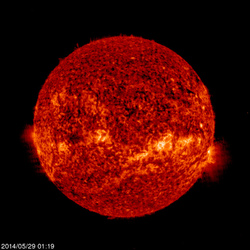 May 29, 2014 John E. Ross, KD8IDJ, Editor
| |||||||||
Additional Places Opened for ARRL Centennial Convention "Thursday Training Track" Courses ARRL Centennial Convention Program and Forum Chairman Dan Henderson, N1ND, announced this week that additional places have "The 'Contest University,' 'DX University,' and 'Public Service Communications Academy' already have maxed out their original 100-participant caps," Henderson said. "We have opened additional seats in all three of those tracks." Henderson said the "RFI-101," "Leadership and Training Tools for Amateur Radio," and "Introduction to Amateur Satellites" classes now are more than half full. He encouraged anyone interested to register Prospective students will not be able to register at the convention for any Thursday Training Track courses. "It is advanced registration only for Thursday," he said. All convention registrants who sign up for a Thursday Training Track may attend the luncheon, which will be held in the ARRL Centennial Ballroom. The luncheon is included as part of the registration fee. Thursday's lunch will feature ARRL First ARRL Vice President, Rick Roderick, K5UR. A listing of all ARRL Centennial National Convention forums and presenters is available on the ARRL website. Centennial Convention to Feature Communications Law and Regulatory Update Seminar A Communications Law and Regulatory Update seminar will be a featured program offering on Thursday, July 17, at the ARRL Centennial National Convention in Hartford, Connecticut. ARRL General Counsel Chris Imlay, W3KD, and San Francisco Section Government Liaison (and Volunteer Counsel) Bart Lee, K6VK, will be the presenters. The ARRL National Legal Seminar will take place from 11 AM until 4:30 PM. All participants must sign up for the seminar in advance during the Centennial Convention registration process. The fee for the three-day admission is $75, which includes the special Thursday luncheon as
part of the activities. Attorneys planning to attend the Continuing Legal Education seminar, must also complete a second registration online. The fee is $125. Lee's law firm, Spiegel Liao & Kagay, is the California-registered Continuing Legal Education (CLE) provider, and is participating in the ARRL Centennial National Convention as a vendor. Attorneys taking advantage of the CLE seminar must pay the fee, whether or not they take advantage of the available Mandatory Continuing Education (MCE) credit certification. For more information on the CLE portion of this training track, contact Bart Lee (415) 956-5959 ext 203. Attendance at the afternoon (1:30 to 4:30 PM) session is on an advance-registration, space-available basis to non-attorney Amateur Radio operators who wish to become informed on various legal issues. Non-attorney participants will not receive the resource book provided to the attorney participants. Read more. Centennial QSO Party "Red Badges on the Air" Activity is June 1 (UTC)! A reminder: The ARRL Centennial QSO Party "Red Badges on the Air" activity takes place on Sunday, June 1, from 0000 UTC (Saturday, May 31, in US time zones) until 2359 UTC. That's when ARRL officers, elected officials -- such as Director or Section Manager -- other Field Organization volunteers, and Headquarters staffers and volunteers will be on the air to help boost Centennial QSO Party point totals. The ARRL identification badges worn by these League volunteers and employees are red, hence the name "Red Badges on the Air."
Contacts with "Red Badges" are worth a lot of points -- as much as 300 points per contact for working ARRL President Kay Craigie, N3KN -- so participants can increase their Centennial QSO Party tally very quickly. The event is an activity day, not a contest. Participants can call "CQ ARRL Centennial QSO Party" on phone or "CQ CENT" on CW or digital modes. All activity is welcome, regardless of point value; every ARRL member is worth at least one point in the Centennial QSO Party. Participants get credit for each band/mode contact, regardless of point value. ARRL Centennial QSO Party participants can use the online leader board to determine how many points they have accumulated. Other high-point contacts include: president emeritus (PE) or past president (PP), 275 points; honorary vice president (HVP) or ARRL vice president (VP), 250 points; director (DIR), director emeritus (DE), or past vice president (PVP), 225 points; vice director (VD), 200 points; section manager (SM), 175 points; ARRL officer (OFF) or past director (PD), 150 points, and past vice director (PV), 125 points. Ohio Antenna Law Challenge May Be Over In a surprise move, the Ohio Sixth District Court of Appeals has dismissed an appeal from the Village of Swanton, Ohio, in an Amateur Radio antenna zoning case. The ARRL had announced plans to file a "friend of the court" or amicus curiae brief on behalf of ARRL Life Member Gary Wodtke, WW8N, who has been trying since 2009 to erect a 60 foot antenna support structure on his 0.2 acre residential lot. It now appears that he will be able to do so. The Village of Swanton, Ohio, has established a fixed antenna height of 20 feet above the residential roofline, and it turned down Wodtke's antenna variance application for the taller structure. On appeal, Wodtke in January won a final judgment in his favor in the Fulton County Common Pleas Court. The court ruled that federal and state law preempted Swanton's antenna ordinance.
The Appeals Court ruling on April 3 was based on the fact that the trial court decision the Village could have appealed was issued on August 20, 2013, while the judgment that the Village attempted to appeal was issued on January 21, 2014. Since the August 20 trial court decision was a final order, the Village was required to file its appeal within 30 days, and it never did so, thus losing its right to appeal. The ruling means that the August 20 trial court decision stands, and Wodtke wins the right to erect the tower for which he applied. The award of attorney fees appears to be at the center of confusion on both sides of the case. The trial court's decision last August 20 decision awarded attorney fees to Wodtke. Because attorney fees had not yet been determined, both sides considered the decision as not yet final. But, while Wodtke's attorney had sought attorney fees in his original complaint, the amended complaint that the trial court ruled upon last summer included no such request. The Court of Appeals said that, ordinarily, when attorney fees are requested in a complaint but not yet ruled upon, the order disposing of the rest of the case is not final and appealable, but the court pointed out that a claim for attorney fees was not pending once court entered its August 20 judgment. "Therefore, the order was final and appealable on August 20, 2013," the court said.
The Court of Appeals' April 3 decision could yet be reviewed by the Ohio Supreme Court, but only if the Village had filed a timely Memorandum in Support of Jurisdiction to convince the high court to hear the appeal. Ohio Section State Government Liaison Nick Pittner, K8NAP, believes the Appeals Court decision in Wodtke v. Village of Swanton could set legal precedent for similar antenna-related cases down the road. An attorney, Pittner was instrumental in getting Ohio's PRB-1 law enacted. "The Ohio Municipal League seems intent on challenging [the PRB-1 law] in court, and will likely try to do so in some other case if the challenge is not available in this one," Pittner said. "We're keeping the research files open." -- Delara News, Delaware (Ohio) Amateur Radio Association Fox-1 Launch Date Slipping into Summer of 2015 AMSAT-NA has announced that its Fox-1 CubeSat likely will not launch until the summer of 2015, "due to governmental priorities." The satellite was set to head into orbit in December of this year. Fox-1 is on the flight manifest for NASA's Educational Launch of Nanosatellites Mission 12 (ELaNa-12) group of satellites. The first phase of Fox satellites are 1-Unit CubeSats that will include an analog FM voice repeater to allow simple ground stations using a hand-held transceiver and a simple dual-band antenna to make contacts via the satellite. The Phase 1 CubeSats also can handle high-speed digital communication. Two Phase 1 Fox satellites have been accepted into the ELaNa program.
The ELaNA-11 mission also has slipped, Baines said, and now is set to fly in the March/April 2015 time frame, instead of next February. Because both launches are being delayed, he said, the National Reconnaissance Office-Office of Space Launch (NRO OSL) has asked that CubeSats currently scheduled for ELaNa-11 or ELaNa-12 be delivered to Cal Poly by this October 1 -- 4 months later than the original Fox-1 delivery date but "with the potential for being flown on the earlier flight," Baines pointed out. The downside is that the ELaNa-11 orbit is slightly different, with a lower apogee and inclination and with a shorter orbital life -- 6.5 years
as opposed to 11 years for the ELaNa-12 mission. "Consequently, we're looking at the impacts of flying earlier, with the tradeoff of shorter mission duration," Baines said. Baines pointed out that, as a secondary payload, AMSAT "is at the mercy of decisions by those who are 'paying the freight.'" As he put it, "We're benefiting from a launch paid for by the US Air Force; their mission priorities drive the launch opportunities." He asked that AMSAT members also understand that such a free ride "comes with the expectation that launch schedules may indeed be altered to satisfy other requirements. Stay tuned." AMSAT's Phase 2 Fox satellites will include software-defined-transponders (SDX) such as the one tested on ARISSat-1. The Phase 2 satellites will operate on a variety of analog and digital communication modes, including linear transponders. Because of power requirements, the Fox-2 satellites likely all will be 3-Unit CubeSats, AMSAT has said. -- Thanks to AMSAT News Service Oklahoma Grant Will Fund Amateur Radio-Based SKYWARN Location-Tracking System Okmulgee County, Oklahoma, Emergency Management (OCEM) has been awarded a grant of nearly $3700 from Operation Round Up and the ECE Foundation that will allow the agency to purchase a Amateur Radio-based location-tracking system for SKYWARN storm spotters. ARRL Oklahoma Section Emergency Coordinator Mark Conklin, N7XYO, and several area radio amateurs helped county emergency managers in planning the project. "This grant award will allow for the installation of an Automatic Packet Reporting System (APRS) I gate, several APRS digipeaters, and several portable APRS beacons," Conklin said. "Working with as partners, together we are able to serve our community through Amateur Radio."
In Oklahoma most SKYWARN storm spotters report their observations via Amateur Radio to local emergency management. Tracking and guiding storm spotters to safe observation locations during severe weather events can be a challenge, however. APRS, which permits a station to report its location as it moves, is a useful tool, both for SKYWARN storm spotters and those involved in emergency communication. Accurate position information is crucial when reporting information during severe weather events or other emergencies. In disaster scenes, APRS can prove especially helpful to emergency managers when known landmarks have been damaged or removed. OCEM said it plans to construct and maintain several APRS digital repeaters systems and an APRS base receiving station for its Emergency Operations Center, add APRS systems to several key OCEM vehicles, and develop several portable APRS tracking systems. Read more. -- Thanks to Mark Conklin, N7XYO, Oklahoma Section Emergency Coordinator QRZ.com Now Supports "Secondary" Call Signs The popular QRZ.com website has announced some new features. The site's call sign database now fully supports "secondary" call signs. "A secondary call sign is one which includes a slash plus a modifier as either a prefix or a suffix to the primary call sign," QRZ.com Publisher Fred Lloyd, AA7BQ, explained. In other words, users can create separate pages for their DXpedition, QRP, or mobile operations, for example, or for a repeater, by editing their account options from the main QRZ menu, located below their call sign at the top right of the page. Any combination will work, Lloyd said, and the server can find an appended call sign, whether users apply a prefix or a suffix to their primary call signs.
IEEE International Frequency Control Symposium Honors Ulrich Rohde, N1UL Ulrich Rohde, N1UL (ex-KA2WEU), is the recipient of the C.B. Sawyer Memorial Award. Rohde, the chairman of Synergy Microwave
Corporation and President of Communications Consulting Corporation, was honored at the 2014 IEEE International Frequency Control Symposium May 19-24 in Taiwan. The award recognizes "entrepreneurship or leadership in the frequency control community; or outstanding contributions in the development, production or characterization of resonator materials or structures." The Symposium specifically recognized Rohde "for the development of PC software now allowing nonlinear noise analysis of RF circuit and the founding of Synergy Microwave, including the design and manufacture of ultra-low noise sources, RF components and subsystems exhibiting state-of-the-art performance" Rohde is the author of some 200 scientific papers and books, and numerous QEX and QST articles. Cuba Now Issuing License Endorsements for Limited, Domestic 60 Meter Operation Cuba's Ministry of Communications has begun issuing license endorsements for experimental operation on 60 meters, but US stations that stick to the five allocated channels won't hear them. Pavel Milanes Costa, CO7WT, in Camagüey, reported earlier this year that the Ministry had authorized use of the band on a secondary basis, but its principal use will be during emergencies. Cuban hams who are granted an endorsement will be allowed to transmit between 5418 and 5430 kHz, on CW, SSB, and PSK-31, but they may only contact other Cuban stations; no international contacts are allowed. Since the 12 kHz Cuban allocation does not coincide with the five channels that US "I had my license update on May 21, and I'm testing on the band, mainly around 0000 UTC on 5422.0 kHz LSB and encouraging other Cuban hams to get their license upgrades for this band," he said. At World Radiocommunication Conference (WRC) 2007 it was Cuba that suggested establishing a secondary Amateur Service allocation within the band 5250 to 5450 kHz. The item failed at WRC-2012 but will be on the agenda of WRC-2015 as Agenda Item 1.4. The band 5250 to 5450 kHz is allocated to the fixed and mobile services, except aeronautical mobile, on a primary basis. The FCC authorized five channels for US radio amateurs after consulting with the National Telecommunications & Information Administration (NTIA) regarding ongoing government use of that region of the spectrum. The US channels were specifically chosen to avoid Amateur Radio interference to government operations. -- Some information from Southgate Amateur Radio News TX5K DXpedition Wins DxCoffee/DX University "Best Communication Award" DxCoffee and DX University have announced that the TX5K DXpedition to Clipperton Island will receive their 2013 Best Communication Award. The two groups partnered to sponsor the award. The TX5K DXpedition was recognized for "the large amount of information given before, during, and after the operation on the official DxCoffee and DXUniversity congratulated TX5K Team Leader Robert Schmieder, KK6EK, and Social Media Supervisor Rich Holoch, KY6R, for keeping the DX community informed. Receiving "special mention" from the groups were the IA0MZ DXpediton to Terra Nova Bay, Antarctica; the 5W0M DXpedition to Western Samoa, and the VK9CZ DXpedition to Cocos Keeling Islands. The DxCoffee and DX University said many other DXpeditions deserved recognition, and the choice "was not easy." -- Thanks to Pasquale La Gamba, IZ8IYX/K8IYX A Century of Amateur Radio and the ARRL For many years, there had been talk about creating an entry-level ham license, first between the ARRL and the FCC, and later within the amateur community. Many who wanted to become hams viewed the 13 WPM Morse code test as an insurmountable obstacle. After much deliberation, the FCC decided to create a new "Novice" license class.The Commission began issuing Novice tickets on July 1, 1951. In those early years, Novice licensees were allowed to operate CW on sub-bands in 80, 11 (yes, 11!), and 2 meters, and AM voice on a segment of 2 meters. Novices were restricted to crystal-controlled operation at an input power of 75 W. Novice applicants had to pass a 5 WPM code test -- both sending and receiving. At first, the receiving test was made up of only 5-character words, making it an ever easier test. Early examinations consisted of 25 multiple-choice questions; the FCC would mail the test materials in a sealed envelope, and a local General or higher class licensee would administer the written and code exams to the applicant.
The original Novice license had a 1-year, nonrenewable term, since it was anticipated that Novices could get their code speed up to 13 WPM and acquire the technical knowledge required to pass the General exam within that period. Earlier Novice call signs included an "N" after the W or K prefix. Upgrading to General often was referred to as "dropping the N." Later Novice designators included a "V" after the prefix, which became an "A" after the holder upgraded. The FCC eventually did away with special Novice call signs altogether. One amusing aspect of that early Novice 80 meter operation: World War II crystals were abundant and inexpensive. Wartime military operation had been channelized, mostly using crystal control, and one surplus crystal frequency fell within the 80 meter Novice band -- 3735 kHz. As you tuned across the 80 meter Novice band back then, it sounded like a full-blown DX pileup, 24 hours a day, when you reached 3735 kHz (known in that era as "kc"). In later years Novice licenses were issued for 2-year non-renewable terms, and later still for 5-year renewable terms. More questions were added to the written exam. Other sub-bands were opened for Novices on 40 and 15 meters, 2 meter Novice operation was eliminated, and 11 meters was turned over to the Citizens Band. The FCC eventually allowed Novices to use VFOs. On April 15, 2000, the FCC stopped issuing the Novice license. The Novice era had come to a close. A small number of Novices remain, but most upgraded long ago. The aim of the Novice license had been accomplished: Opening access for more people to become part of the Amateur Radio community. Next week: The Technician ticket arrives. -- Al Brogdon, W1AB In Brief...
The K7RA Solar Update
Tad Cook, K7RA, Seattle, reports: Solar indicators continue to weaken. Average daily sunspot numbers declined from 129.4 to 103.3, and average daily solar flux went from 128.5 to 110.3. This is comparing May 22-28 to the previous 7 days. The instruments used to measure solar flux at the observatory in British Columbia were overloaded on May 24, and the estimated solar flux was 118. The actual measured value was 124.5. Something went wrong at the Fredericksburg, Virginia, magnetometer that supplies our mid-latitude magnetic K and A indices, so there are no data for May 24-27. The mid-latitude A index numbers for those dates will appear in Friday's bulletin are also estimates, but they are my own. The predicted solar flux values for Field Day weekend, Friday through Sunday, June 27-29, have also been declining. On May 15 the prediction was 125, 135 and 135. Then on May 19 they were adjusted down to 120 for all 3 days, and on May 26 the estimate declined again, to 108, 108 and 110. Field Day does not begin until Saturday, June 28, but it is useful to see the prediction for the day before. The latest prediction has solar flux at 98 on May 29, 95 on May 30-31, 100 on June 1-2, 95 on June 3-4, 105 on June 5, 120 on June 6-8, 125 on June 9-11, 120 on June 12-13, 115 on June 14, and 110 on June 15-25. Predicted planetary A index is 8 on May 29-30, 5 on May 31, 8 on June 1, 5 on June 2-4, 8 on June 5-6, 10 on June 7, 8 on June 8, and 5 on June 9-30. This weekly "Solar Update" in The ARRL Letter is a preview of the "Propagation Bulletin" issued each Friday. The latest bulletin and an archive of past propagation bulletins is on the ARRL website. In tomorrow's bulletin look for an updated forecast and reports from readers. Send me your reports and observations. Just Ahead in Radiosport
Visit the Contest Calendar for details. Upcoming ARRL Section, State and Division Conventions and Events
Find conventions and hamfests in your area. ARRL -- Your One-Stop Resource for
Subscribe to...
Free of charge to ARRL members...
| |||||||||
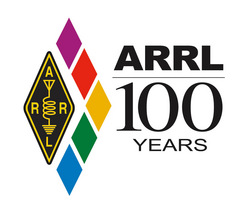 been made available for some ARRL Centennial Convention "
been made available for some ARRL Centennial Convention "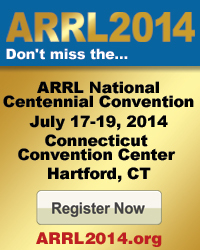
.png)
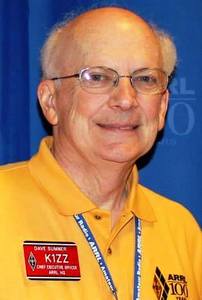
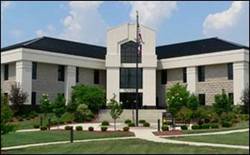
 The Court of Appeals also noted that, although both sides had filed for reconsideration of the August 20 decision, neither of those motions nor the trial court's January 21 decision had the effect of extending the appeal deadline. In the words of the Court of Appeals, "It is well settled that a motion to reconsider does not stay the time to file a notice of appeal."
The Court of Appeals also noted that, although both sides had filed for reconsideration of the August 20 decision, neither of those motions nor the trial court's January 21 decision had the effect of extending the appeal deadline. In the words of the Court of Appeals, "It is well settled that a motion to reconsider does not stay the time to file a notice of appeal."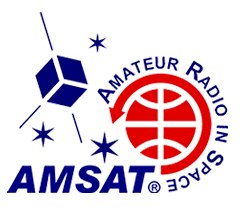 "This delay is mixed news for AMSAT," AMSAT-NA President Barry Baines, WD4ASW,
"This delay is mixed news for AMSAT," AMSAT-NA President Barry Baines, WD4ASW, 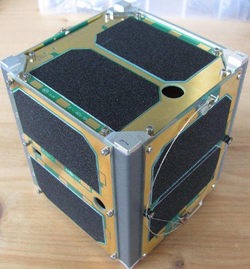
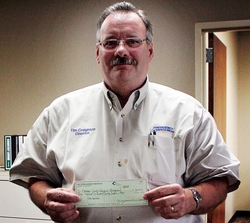
 These call sign options are grafted onto your primary call sign, so that your subscriber status follows. The Detail tab of each page will include a "See Also" listing that displays other call signs related to the primary call sign. Secondary call signs may be deleted at any time, and it's possible to provide a direct link to the secondary page.
These call sign options are grafted onto your primary call sign, so that your subscriber status follows. The Detail tab of each page will include a "See Also" listing that displays other call signs related to the primary call sign. Secondary call signs may be deleted at any time, and it's possible to provide a direct link to the secondary page.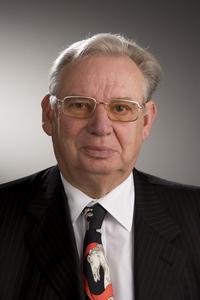
 hams are permitted to use, no inadvertent encounters between US and Cuban hams should occur. Maximum allowed power output is 50 W (or 10 W for Novice operators), and up to 100 W may be authorized in emergencies. Milanes Costa said that Cuban hams would appreciate listener reports.
hams are permitted to use, no inadvertent encounters between US and Cuban hams should occur. Maximum allowed power output is 50 W (or 10 W for Novice operators), and up to 100 W may be authorized in emergencies. Milanes Costa said that Cuban hams would appreciate listener reports.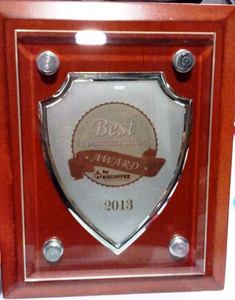 website and the related blog," the groups said. "In particular, the very detailed information reported on the blog let the readers experience every facet of the DXpedition, from navigation to landing, from the environmental issues to the radio-related questions, such as propagation conditions, operating methods for QSOs, operator shifts, etc."
website and the related blog," the groups said. "In particular, the very detailed information reported on the blog let the readers experience every facet of the DXpedition, from navigation to landing, from the environmental issues to the radio-related questions, such as propagation conditions, operating methods for QSOs, operator shifts, etc."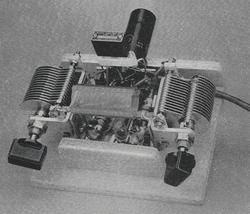
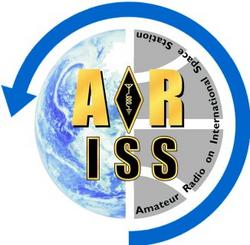 Amateur Radio "Dry Spell" Aboard ISS Ends: Amateur Radio on the International Space Station (
Amateur Radio "Dry Spell" Aboard ISS Ends: Amateur Radio on the International Space Station (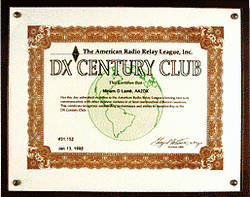 ZA/IZ4JMA, XW7T Operations Approved for DXCC Credit: The ARRL DXCC Desk has approved the 2013/2014 operations of ZA/IZ4JMA -- Albania -- and the 2014 operation of XW7T -- Laos -- for DX Century Club credit. If a request for DXCC credit for either of these operations has been rejected in a prior application, contact ARRL Awards Branch Manager
ZA/IZ4JMA, XW7T Operations Approved for DXCC Credit: The ARRL DXCC Desk has approved the 2013/2014 operations of ZA/IZ4JMA -- Albania -- and the 2014 operation of XW7T -- Laos -- for DX Century Club credit. If a request for DXCC credit for either of these operations has been rejected in a prior application, contact ARRL Awards Branch Manager 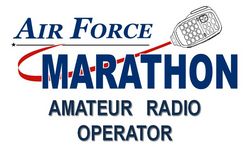 USAF Marathon Amateur Radio Volunteers Sought: Volunteers are invited to support communication for the 2014
USAF Marathon Amateur Radio Volunteers Sought: Volunteers are invited to support communication for the 2014 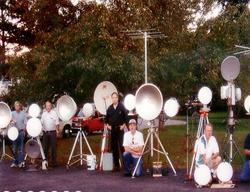 Microwave Update 2014 Set for Late October: Microwave Update (
Microwave Update 2014 Set for Late October: Microwave Update (